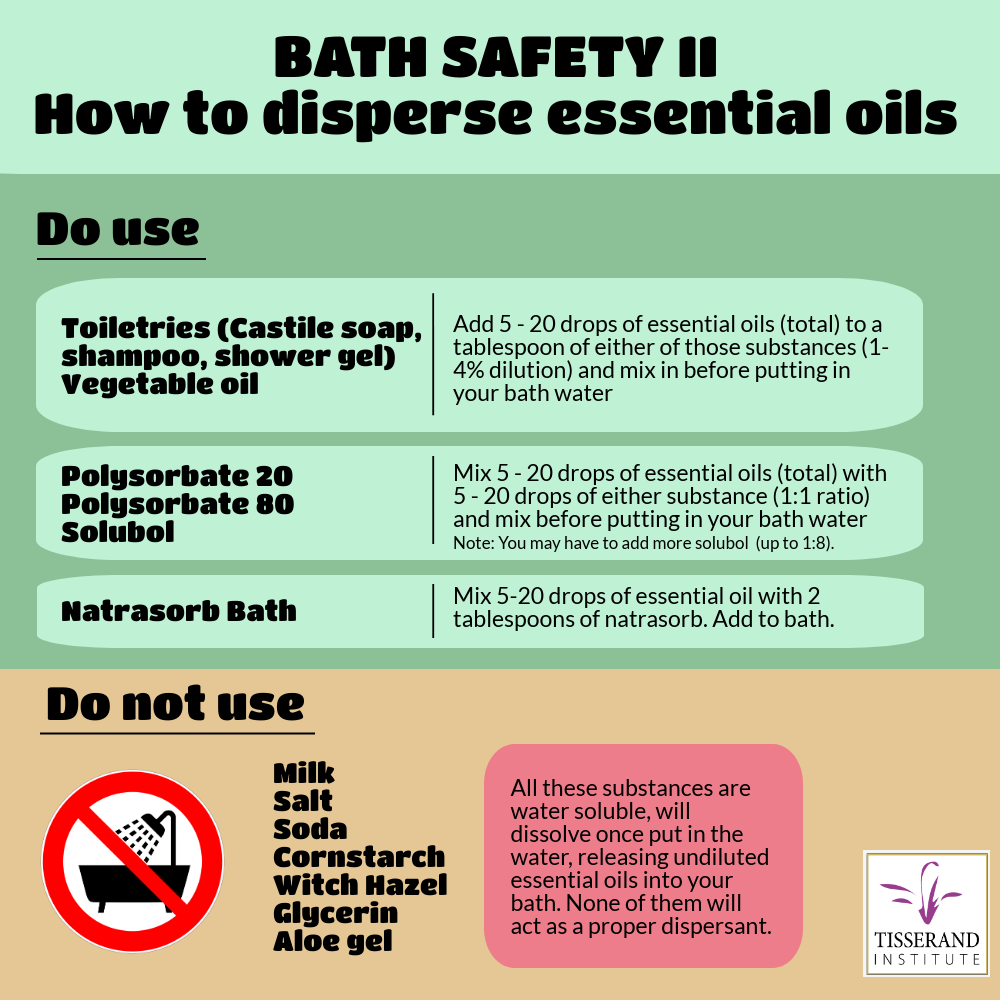An aromatherapy bath can be a very relaxing and therapeutic experience, and it is one of the most popular ways to use essential oils. However, it can very easily turn unpleasant if you don’t follow one simple rule – disperse! Essential oils are not water soluble, and so pouring them directly into a bath will result in a film of undiluted essential oils sitting on top, waiting patiently for your tender flesh to enter the water. Because the oils are warmed up by the water, and also cannot evaporate, they often sting like crazy.
Many have made this mistake, as you can see in our adverse reaction reports here . Unfortunately, some essential oil users try to dilute essential oils in substances that do not work as emulsifiers and will not disperse essential oils, as you can see in the case where a mother diluted some tangerine oil in full fat milk, resulting in a nasty reaction in her two daughters.
We partnered with Deborah Kallevig from www.unfussed.com to assemble a list of substances you either already have at home or can easily obtain, that can be efficiently used to disperse essential oils in your bath. We have highlighted those substances that have a false reputation for being suitable (full-fat milk, epsom salts etc.) with an explanation why they don’t work. We want you to enjoy stress-less and safe baths!
Please note: the information below is based the assumption that each ingredient would be used ‘as is’ and not as a minor ingredient in a formulated product. Always bare in mind safety maximums for specific essential oils!
For more detailed explanation and a list of suppliers, go to https://tisserandinstitute.org/safety/bath-safety/


Is solubol the same as polysorbate 20?
They are quite different. These are the ingredients of solubol: sucrose stearate, Helianthus annus (sunflower oil), cera alba (beeswax), Sterculia urens gum, acacia gum, Propolis cera (bee propolis), glycerin, lecithin, Cocos nucifera (coconut oil), tocopherol, L-ascorbic acid, Rosmarinus officinalis (Rosemary) Leaf extract